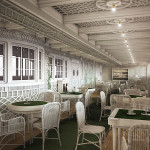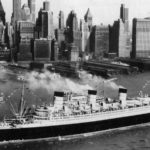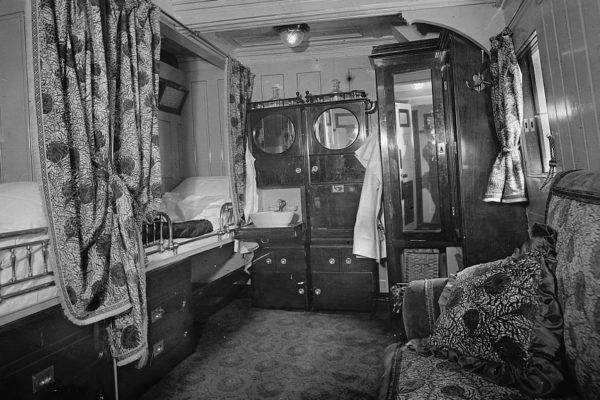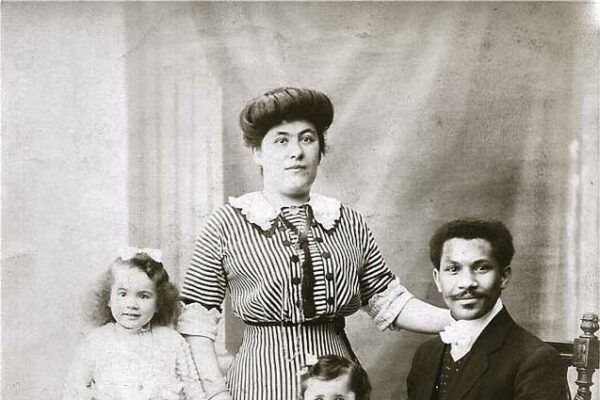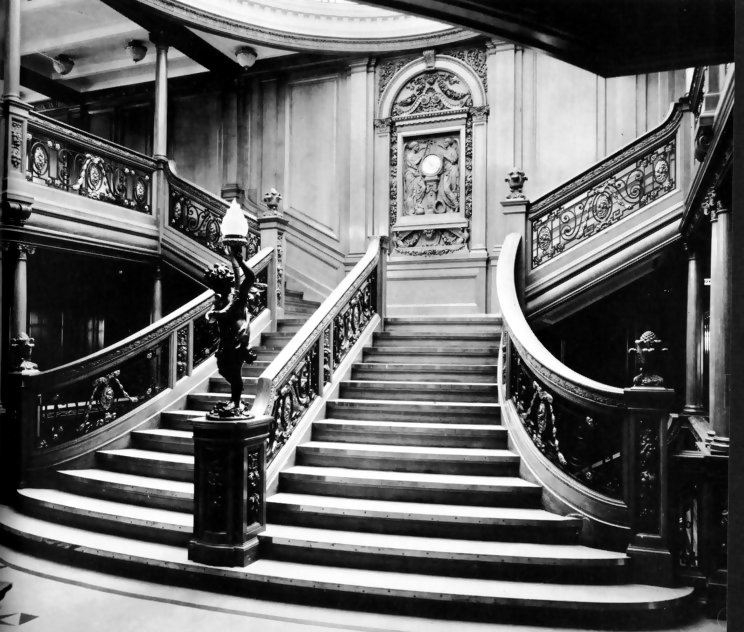
What if we told you that history’s most infamous ocean liner had a twin sister? What’s more, one that lived (almost) happily ever after? As we mark 112 years since the Titanic sunk to the bottom of the ocean, we’re hopping aboard the “Olympic,” the identical ship that was made in tandem with its ill-fated sister. From those four iconic funnels and a noticeable lack of lifeboats on deck, to a grand staircase worthy of Jack Dawson’s ghost, she’s the spitting image of her other half…
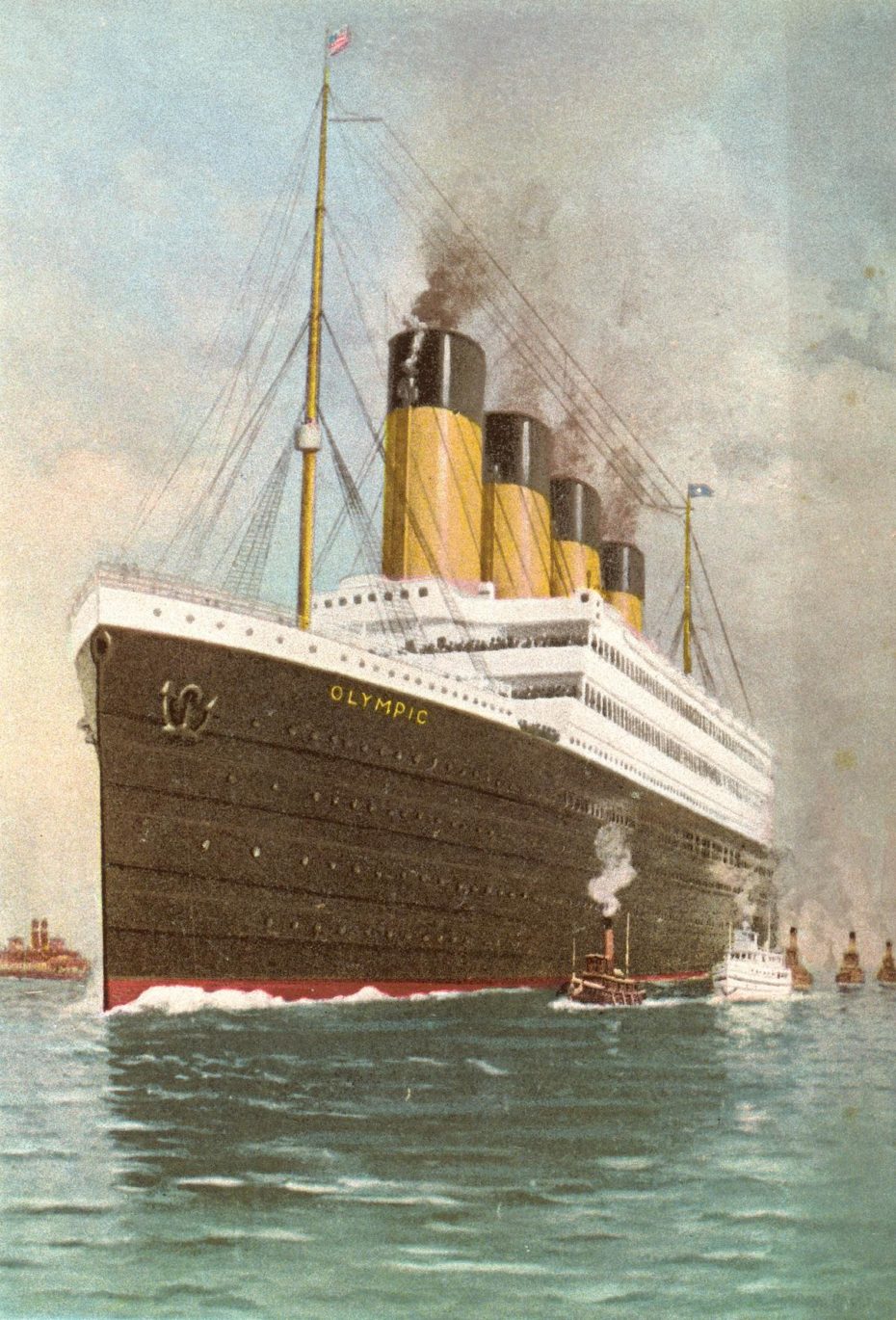
Both the Titanic and Olympic were launched in 1911 by White Star Line, one of the companies competing to make bigger and better “superliners,” and financed partially by American tycoon J.P. Morgan, who was actually set to sail aboard the Titanic before opting out at the last minute. The two vessels were practically mirror images of one another:
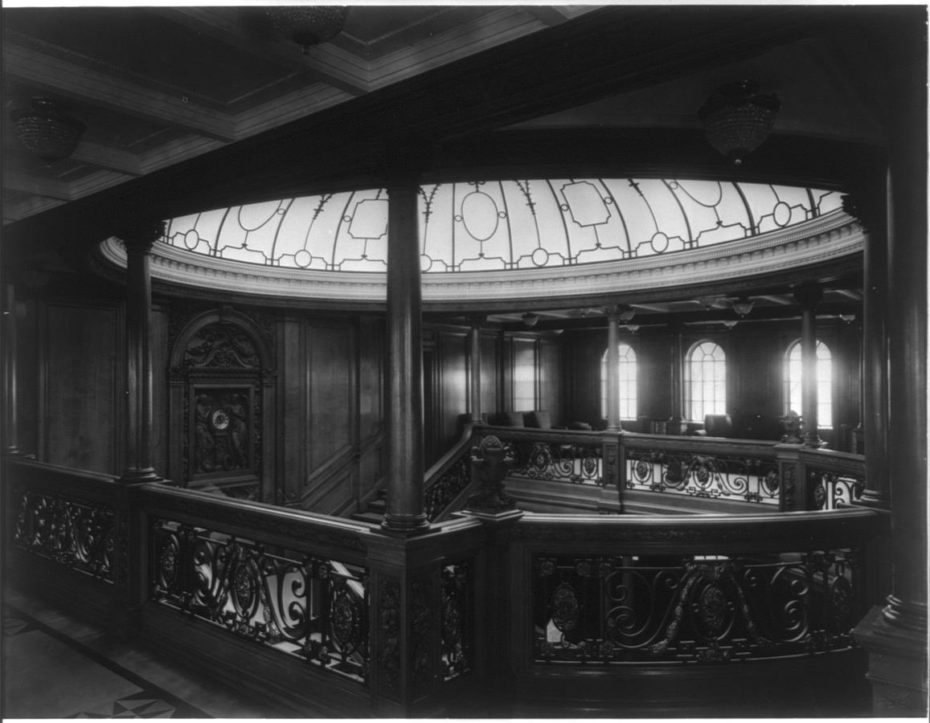
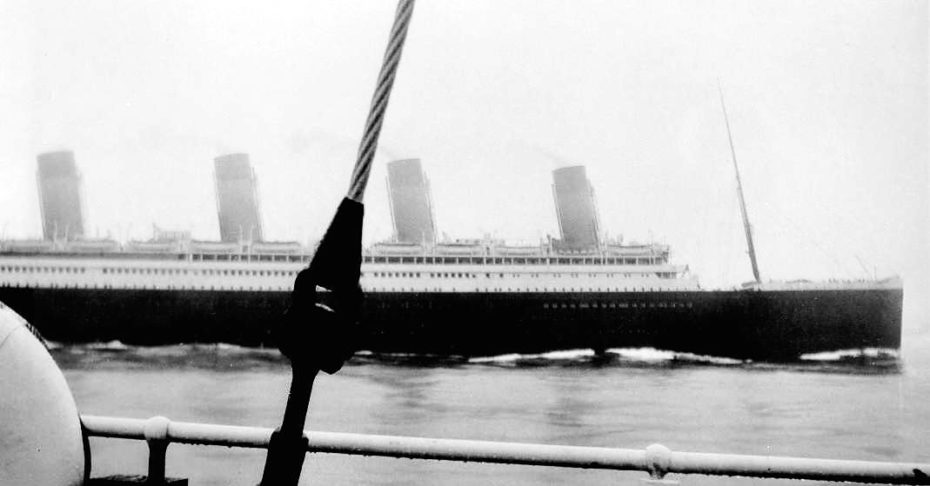
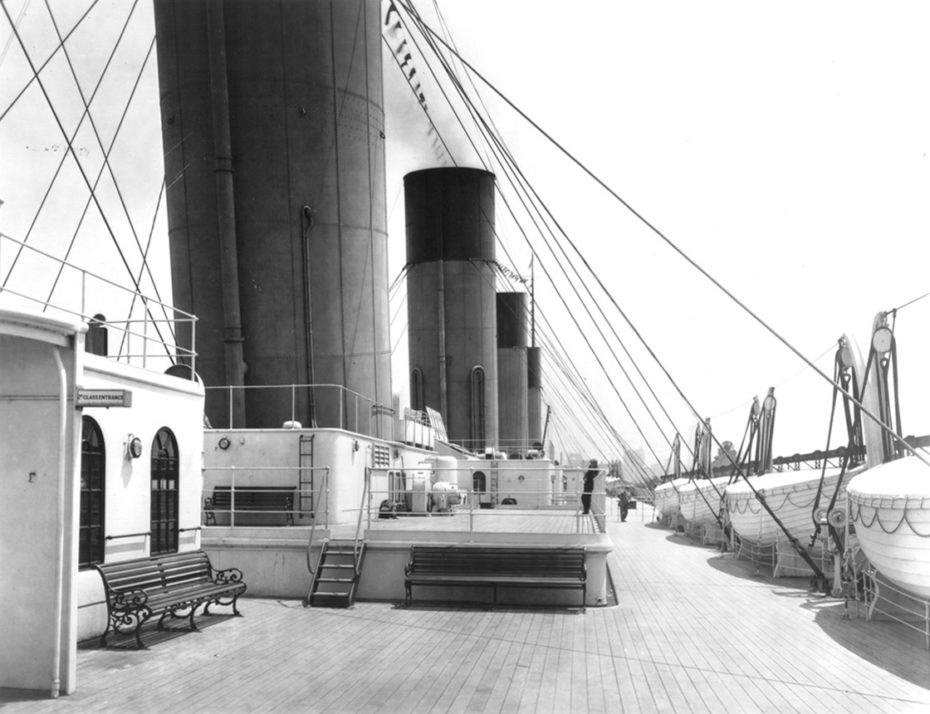
The pressure to build amazing ocean liners was on at the turn-of-the-century– these vessels were the equivalent of Space Race rockets in both technology, and grandeur.
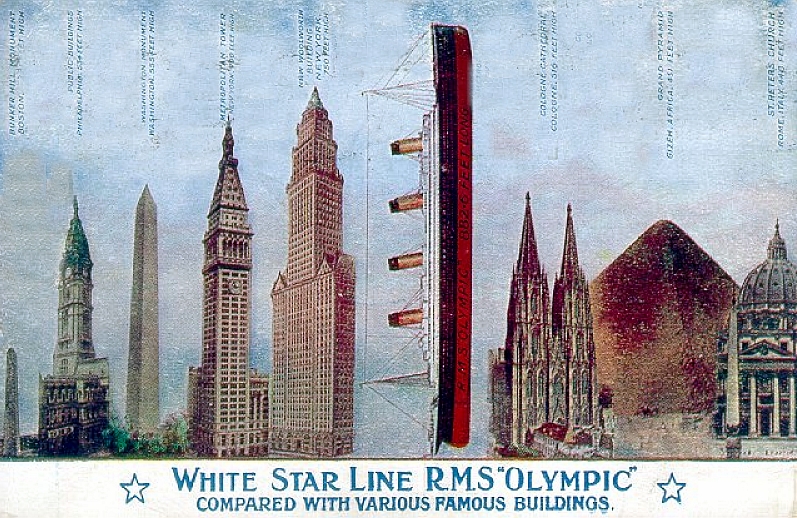
“[The] ships were so big not because they were splendid,” explains John Maxtone-Graham, in the 1999 documentary, Doomed Sisters of the Titanic, “but because they wanted to provide room for this flow of immigrants anxious to leave the old world for the new.”
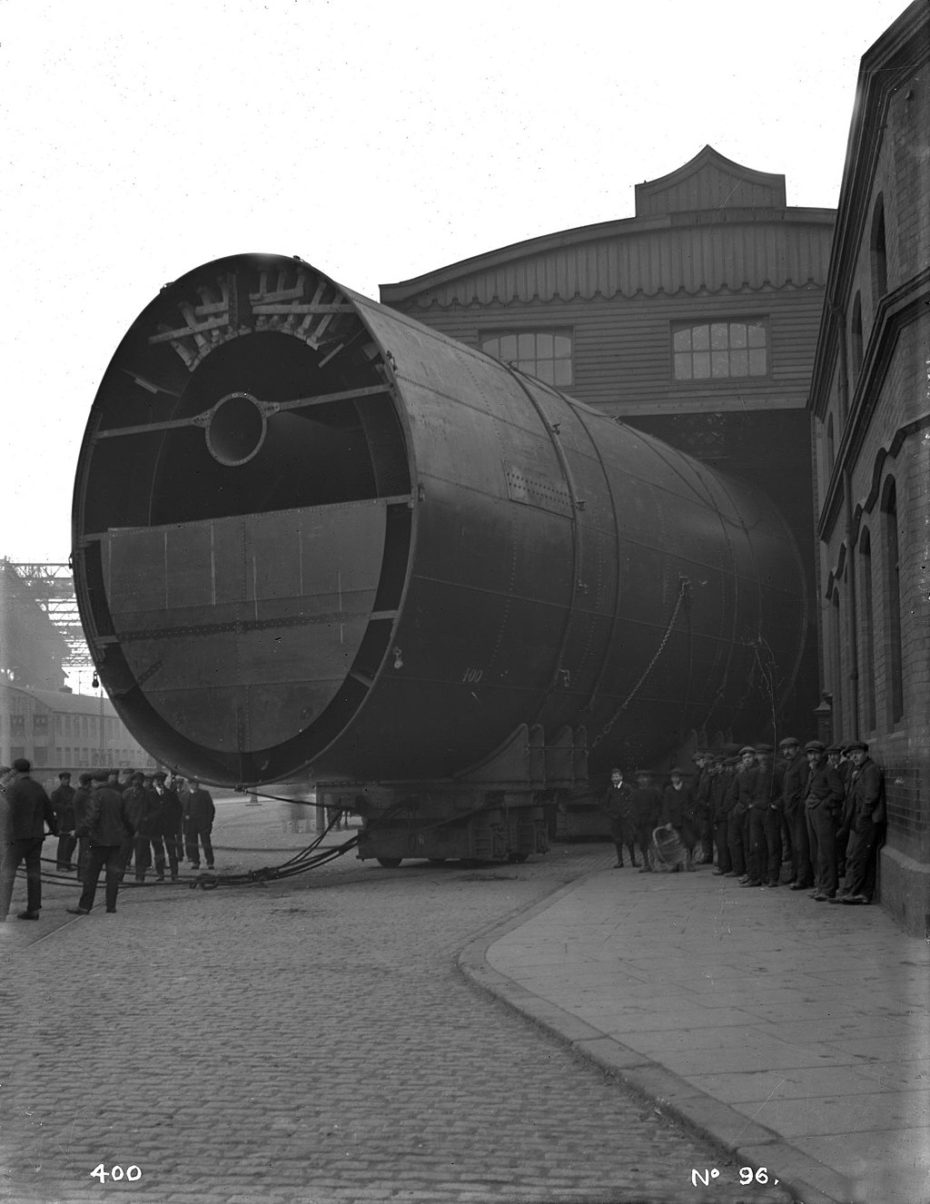
There was just a tremendous market for larger than life travel, and in 1911, the Olympic’s took her maiden voyage: from France to America. The captain was Edward Smith, who would tragically lose his life aboard the Titanic later…
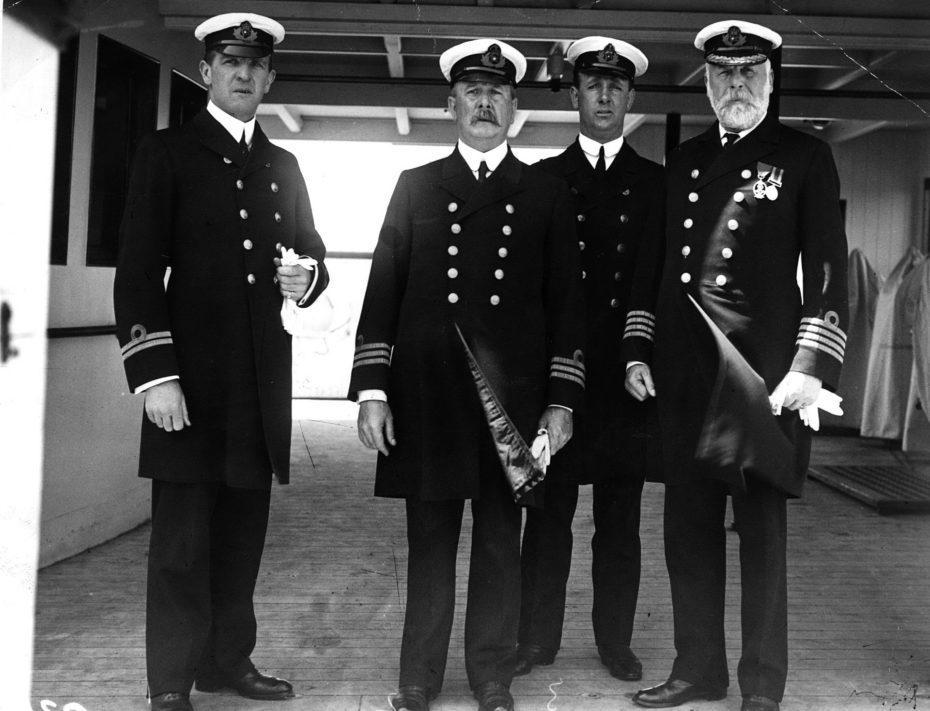
Luxury didn’t remain an afterthought for long for superliners, and the Olympic and Titanic offered nop-notch amenities. There was a gym, Turkish baths, and a pool; various parlours, elevators, dining rooms, and more. Even 2nd and 3rd class passengers aboard the Olympic had enviable luxuries for ocean travel (i.e. a smoking room, library, dining room, and their own elevators).
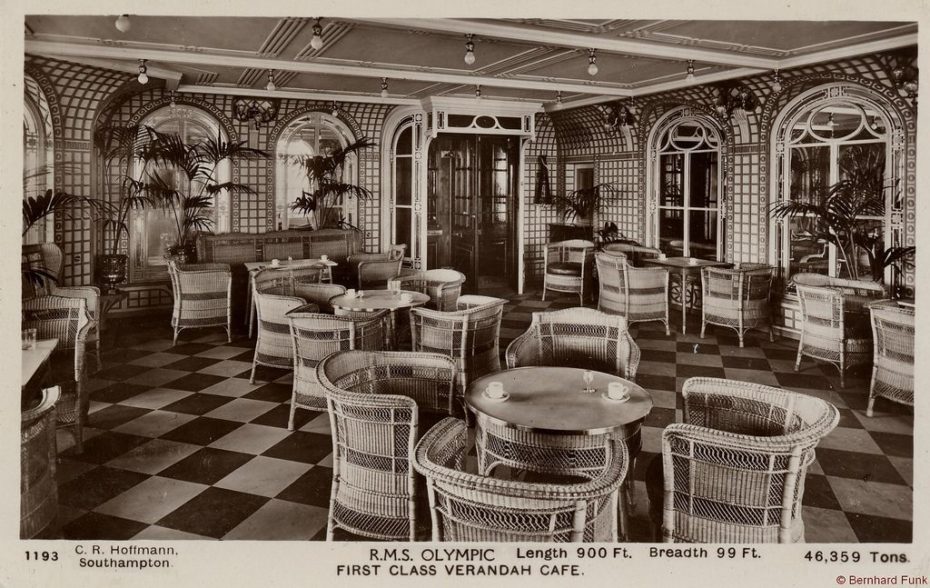
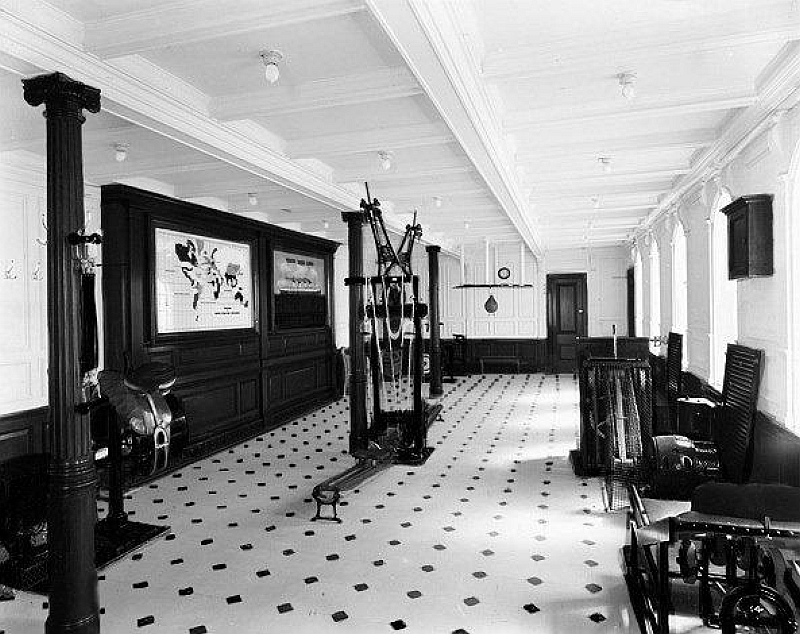
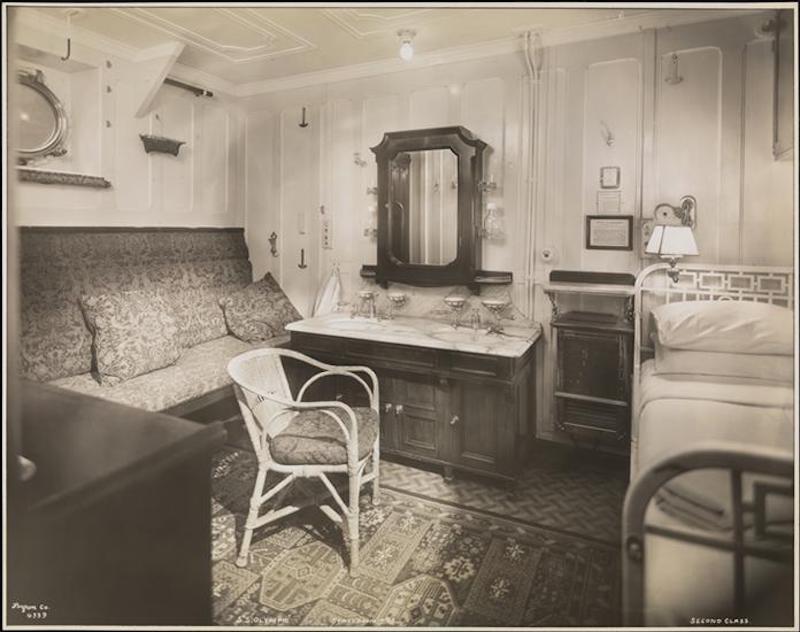
The Titanic and Olympic were such spitting images of one another, that one can’t always tell apart archival images of the two. Case in point: this snapshot of the “terrace,” modelled after a Parisian cafe (above) and found aboard both ships.
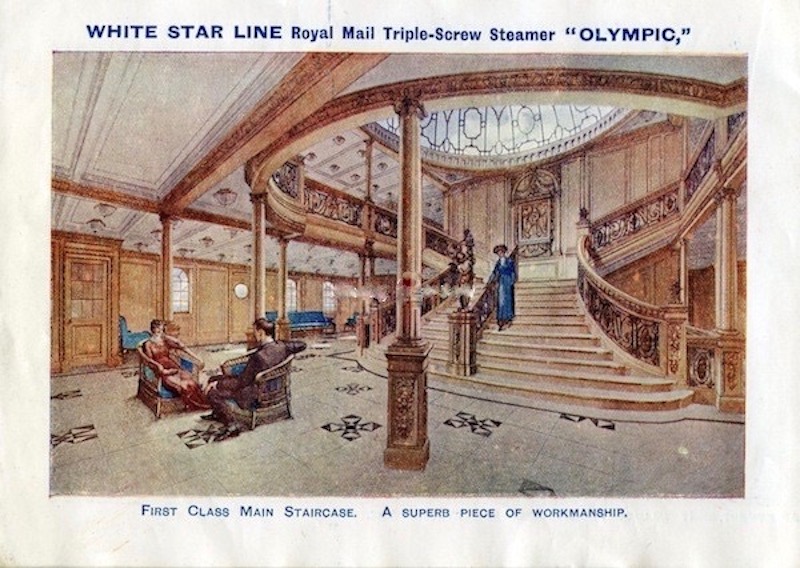
Despite what you may have seen posted around the internet, there are no original photographs of Grand Staircase taken onboard of “Titanic”. All pictures were taken at her twin sister ship Olympic.
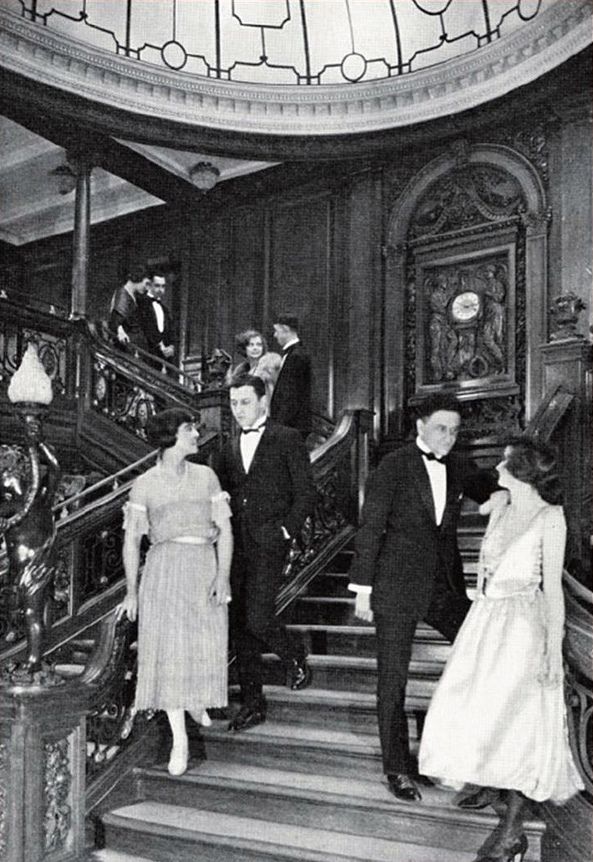
So where was it during the Titanic Disaster? Olympic was about 500 miles away from her sister boat when it received the first distressed call and immediately changed course at full speed to assist in the rescue. When the ship was 100 nautical miles away from the scene of the disaster, Captain Rostron of the nearby Carpathia, which had already arrived at the scene, advised against continuing on course. Olympic offered to take on the rescued passengers but she was turned down by Rostron. The idea of inviting traumatised survivors to climb aboard a mirror image of the ship that had just sunk to the bottom of the ocean, taking over 1,500 people with it, didn’t seem like a good call. Rightly so, Rostron was concerned that it would cause more panic.
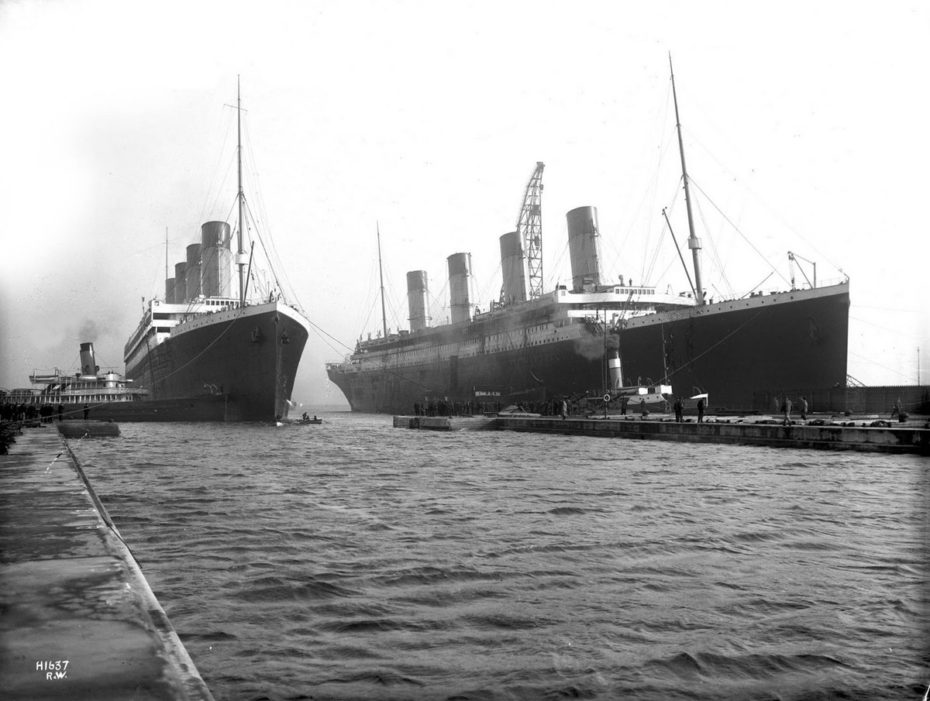
The ship continued onto Southhampton but cancelled all entertainment for the remainder of journey out of respect for its sunken sister. Like the Titanic, the Olympic didn’t carry enough lifeboats. Once back at shore, the twin vessel was hastily fitted with the necessary amount of lifeboats, which historical reports suggest may have been supplied by the surviving fleet of Titanic lifeboats.
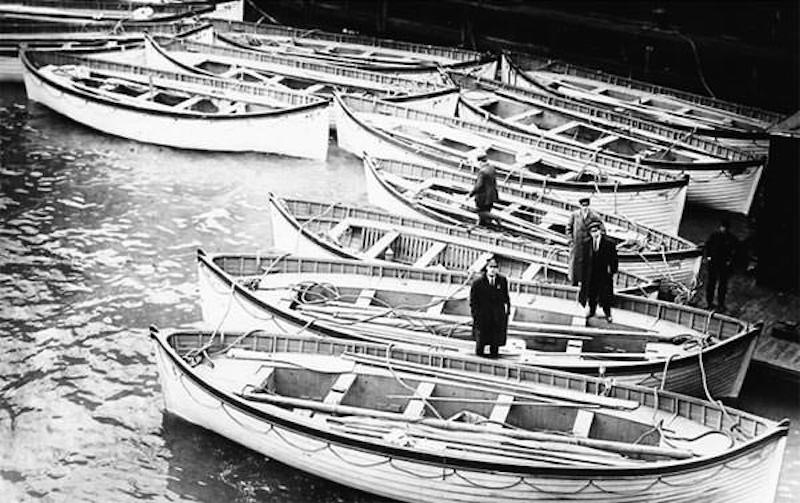
The ship was also used extensively during the American and British inquiries into the disaster; tests were performed at sea to recreate the Titanic’s ill-fated voyage up until the collision to determine how such a tragedy might have been prevented.
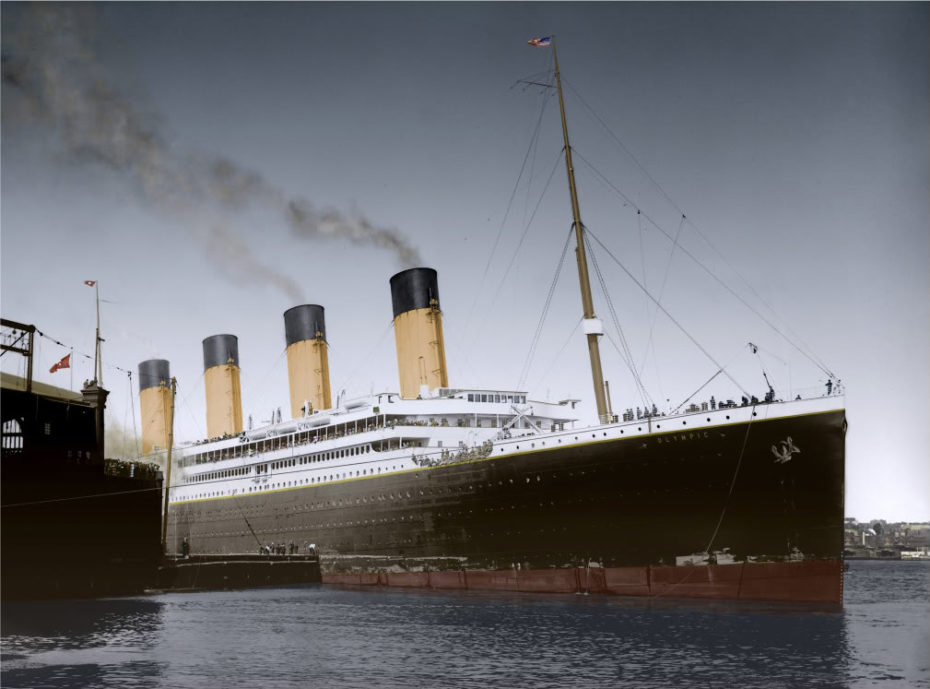
The sinking of the RMS Titanic created so much controversy that it spawned some wild conspiracy theories. One of the most notable theories suggest that it was the slightly older vessel of the two, the Olympic, which sank that fateful night in April 1912 as part of an insurance scam, and that the two ships had been secretly switched before the voyage. Another theory goes even further to accuse the “Napoleon of Wall Street” and Titanic‘s owner, J.P. Morgan, of plotting to eliminate his rivals, John Jacob Astor IV, Benjamin Guggenheim, and Isidor Straus, who all went down with the ship.
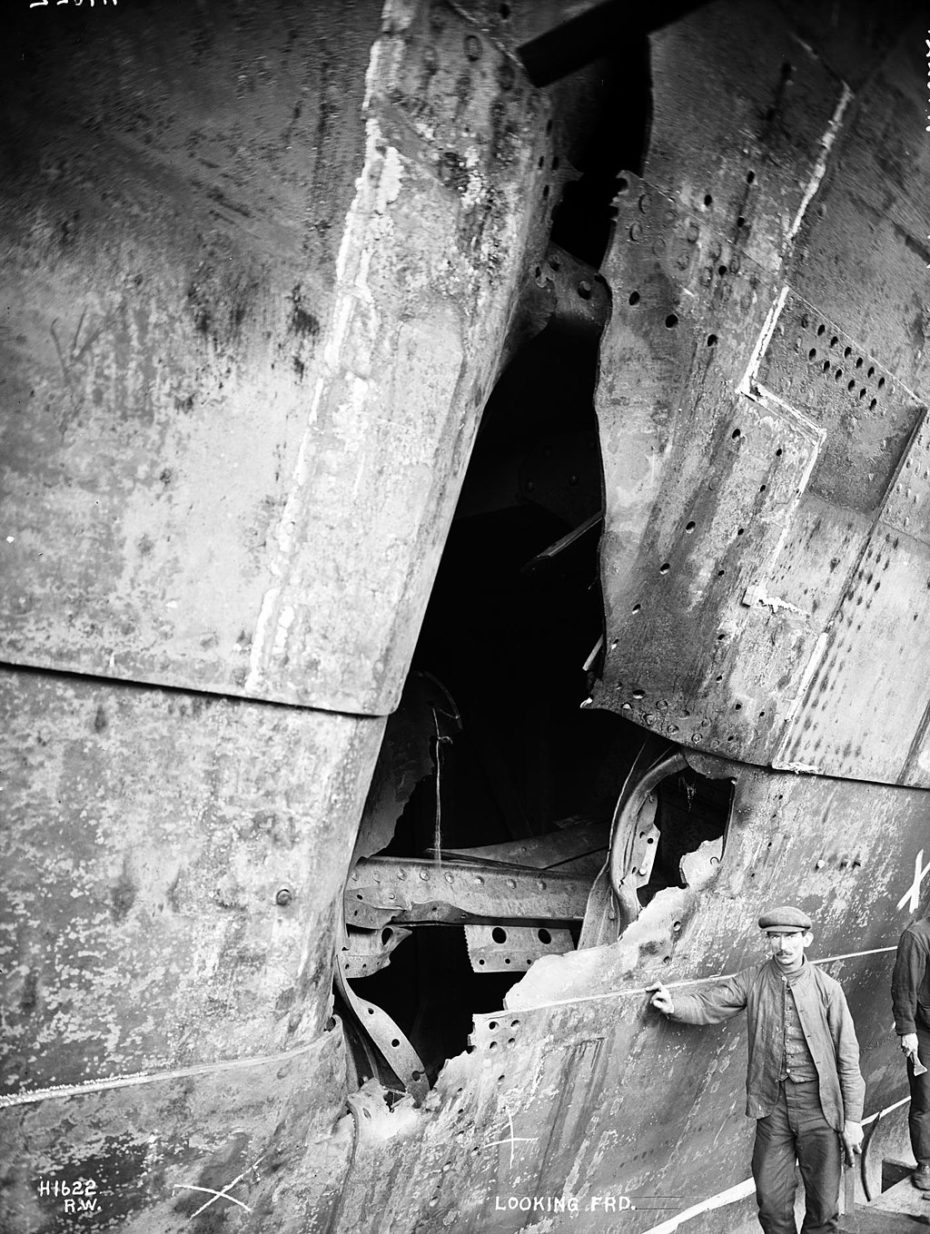
Even though the Olympic didn’t hit an iceberg, she still had her fair share of drama. A year before Titanic’s sinking, in the fall of 1911, she collided with a British cruiser, the “Hawk,” ripping two holes in the ocean liner’s hull (which likely added fuel to the theories about a White Star insurance scam). The ship’s damaged propeller shaft and various parts had to be swapped with ones from the Titanic, which was still in construction at the time, but by 1912, Olympic was back on the water. As WWI broke out, the ocean liner continued to sail across the Atlantic, packed with desperate passengers fleeing the war in Europe.
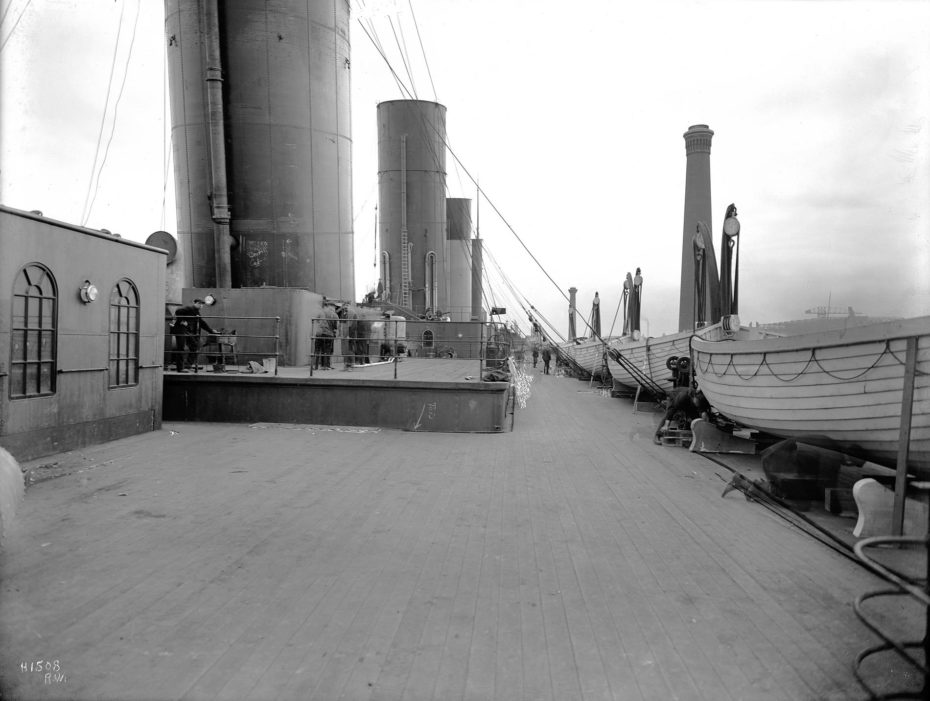
With the increasing threat from German U-boats, the Olympic was on her last commercial voyage, carrying just 153 passengers when she received a distress signal from a sinking British battleship nearby. After rescuing a crew of 250 sailors, she was now officially ready for war…
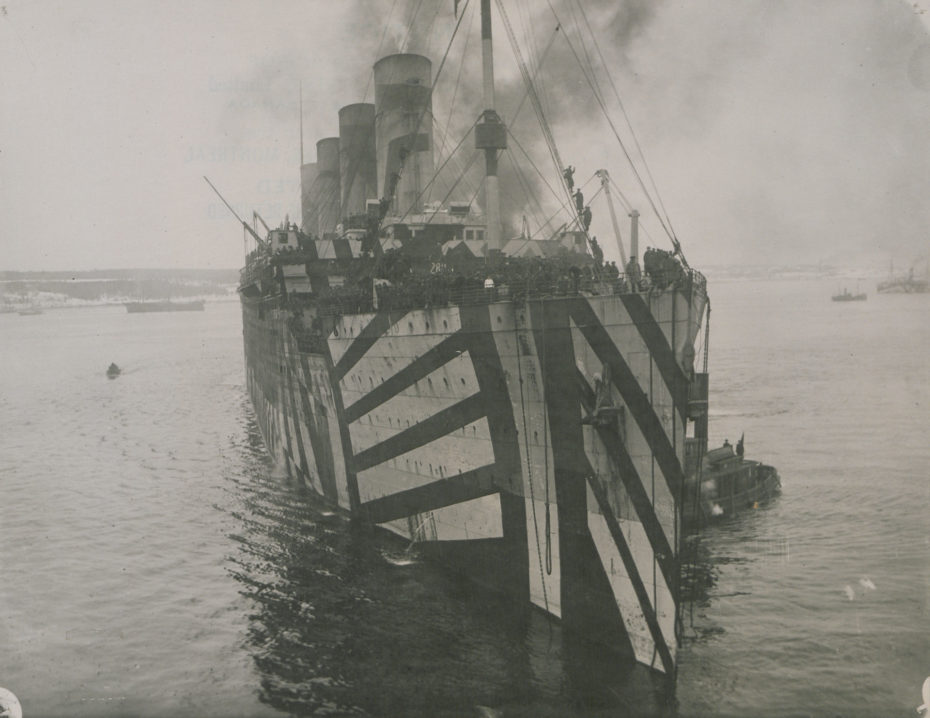
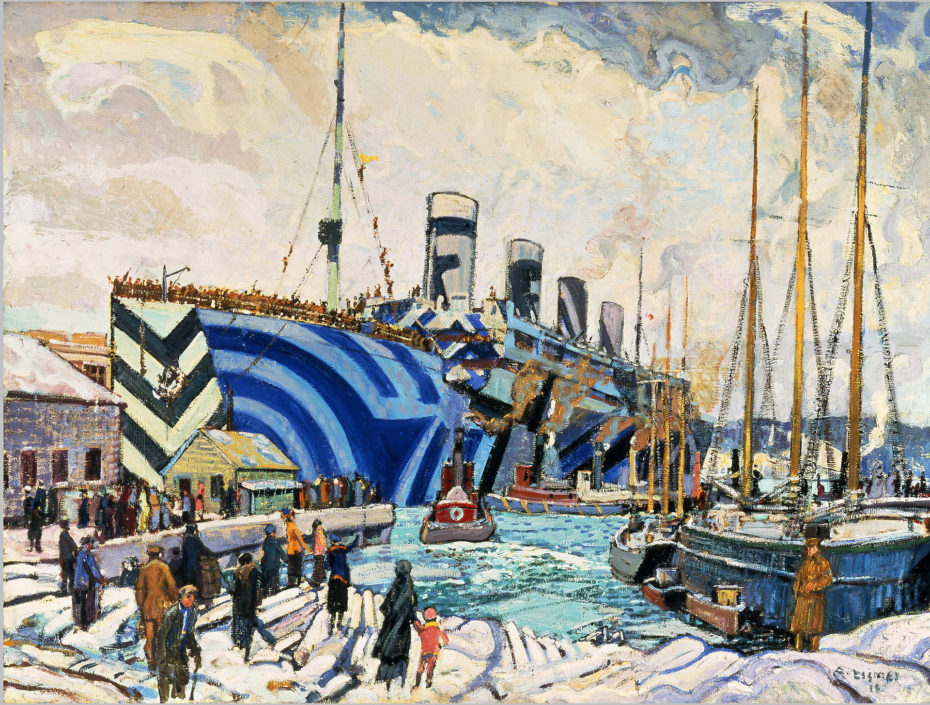
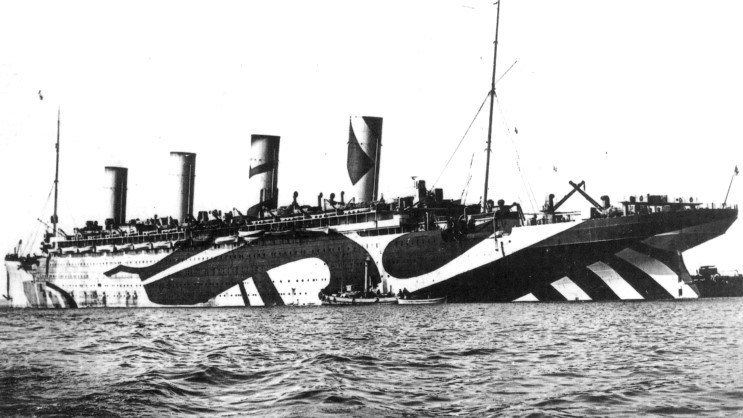
Camouflaged with a “dazzle” paint job, the Olympic transported troops and survived naval warfare during WWI– and the ramming of a lightship in 1934. The former ocean liner carried 200,000 troops over 184,000 miles, earning the nickname “Old Reliable.”
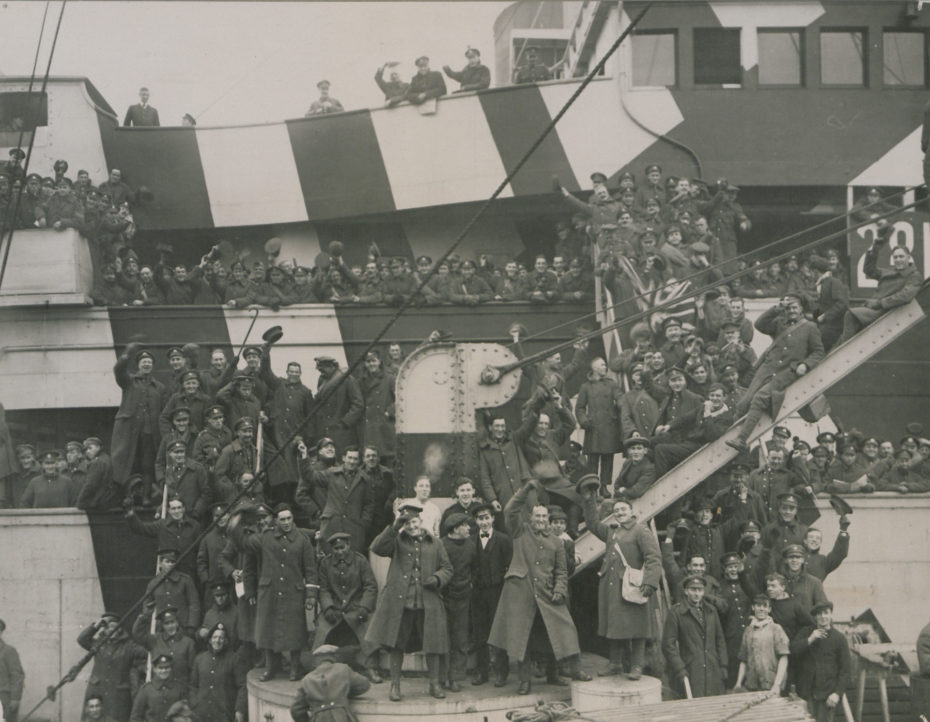
Useful to the end, the Olympic went out like a peaceful organ donor; she was withdrawn from service in 1935, and had her parts sold as scrap for new buildings and ships in 1937. Today, you can actually have supper in her original dining room (the stained glass, fireplace, detail carvings, ceiling work, staircase, and wall panels are all from the ship) at England’s White Swan Hotel in Alnwick, Northumberland. Next to the Titanic replica set to sail in 2020, it’s the closest we’ll ever get to knowing what it was truly like to be aboard the Olympic — and it’s “unsinkable” sister…
Select archival images of the Olympa courtesy of gytismenomyletojastitanikas


